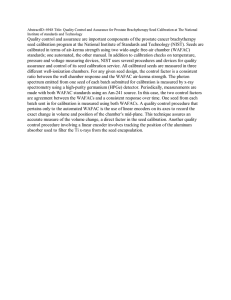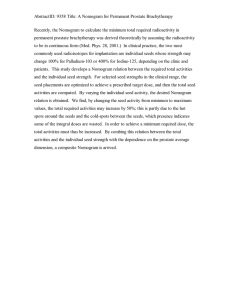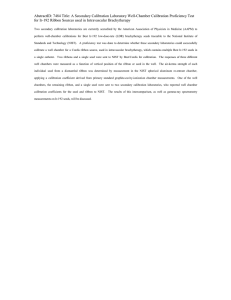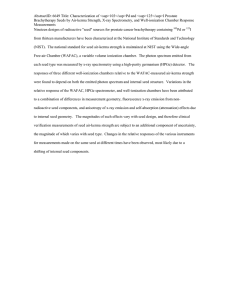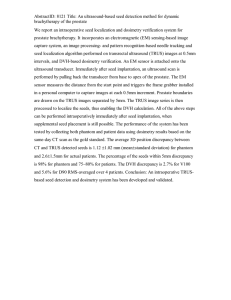Document 14671967
advertisement
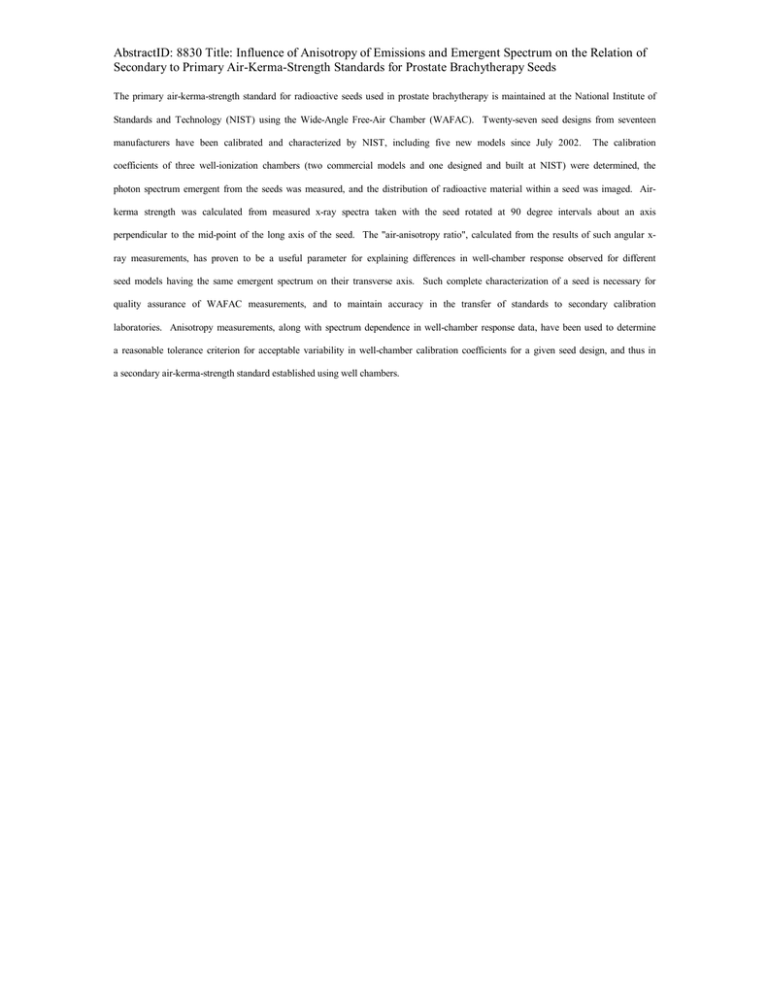
AbstractID: 8830 Title: Influence of Anisotropy of Emissions and Emergent Spectrum on the Relation of Secondary to Primary Air-Kerma-Strength Standards for Prostate Brachytherapy Seeds The primary air-kerma-strength standard for radioactive seeds used in prostate brachytherapy is maintained at the National Institute of Standards and Technology (NIST) using the Wide-Angle Free-Air Chamber (WAFAC). Twenty-seven seed designs from seventeen manufacturers have been calibrated and characterized by NIST, including five new models since July 2002. The calibration coefficients of three well-ionization chambers (two commercial models and one designed and built at NIST) were determined, the photon spectrum emergent from the seeds was measured, and the distribution of radioactive material within a seed was imaged. Airkerma strength was calculated from measured x-ray spectra taken with the seed rotated at 90 degree intervals about an axis perpendicular to the mid-point of the long axis of the seed. The "air-anisotropy ratio", calculated from the results of such angular xray measurements, has proven to be a useful parameter for explaining differences in well-chamber response observed for different seed models having the same emergent spectrum on their transverse axis. Such complete characterization of a seed is necessary for quality assurance of WAFAC measurements, and to maintain accuracy in the transfer of standards to secondary calibration laboratories. Anisotropy measurements, along with spectrum dependence in well-chamber response data, have been used to determine a reasonable tolerance criterion for acceptable variability in well-chamber calibration coefficients for a given seed design, and thus in a secondary air-kerma-strength standard established using well chambers.
